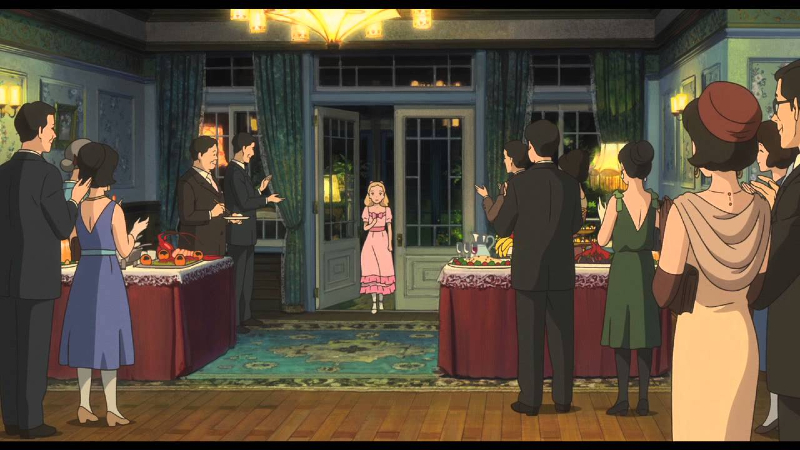Director – Hiromasa Yonebayashi – 2014 – Japan – Cert. U – 103m
****
This second animated work by Ghibli / Arrietty director Yonebayashi is another adaptation of an English children’s author – now showing on Netflix (subtitled / dubbed) and can also be seen in the Anime season April / May 2022 at BFI Southbank (dubbed)
—
The following review originally appeared in Funimation UK.
—
Jeremy Clarke on Studio Ghibli’s latest and possibly last theatrical movie. Now showing on Netflix
Studio Ghibli’s star director Hayao Miyazaki has suggested When Marnie Was There may be its final production. That would be a great shame since the film confirms its director Hiromasa Yonebayashi as a rising talent.
Twelve year old Anna has low self-esteem, rarely interacts with others and is prone to asthma attacks. So Anna’s foster mother sends her to stay with Aunt and Uncle Oiwa in the country. Her uncle warns her to stay away from the supposedly haunted grain storage silo on the hill. The Oiwas put her up in their daughter’s long vacated bedroom.
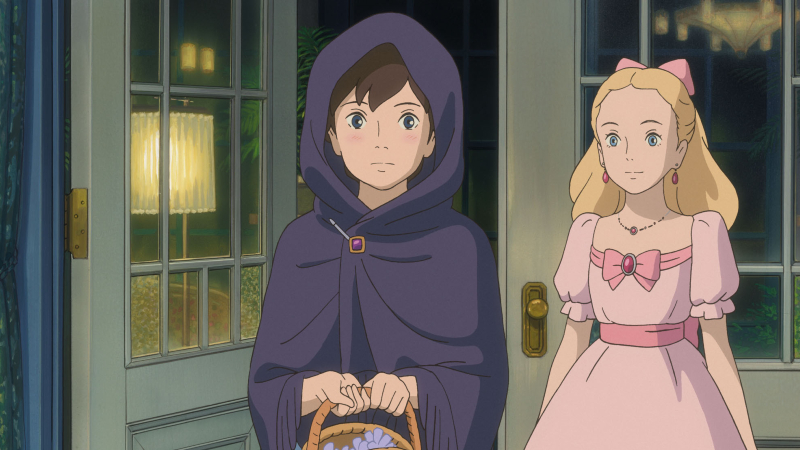
When she opens the window an improvement is immediately visible in Anna as if the view of trees and a lake which greets her is making her aware she is breathing pure, fresh country air for the first time. Exploring the locality later, she comes upon an area of marshland with a mansion beyond. At an upstairs window a woman brushes the hair of a young blonde girl. When high tide turns the marshland into an impassable lake, Anna is rescued from the landing by a boatman whose silence she appreciates.
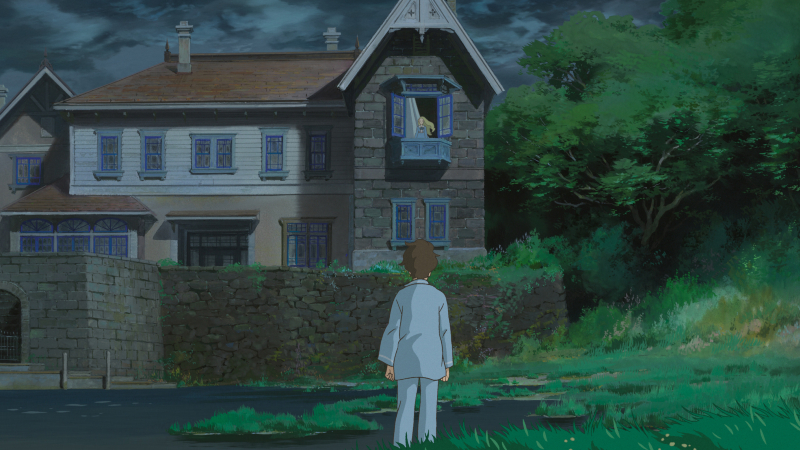
In both real life and dreams, Anna returns over and over to the mansion, meeting and spending time with the girl who she learns is called Marnie. They become friends. Marnie’s parents enjoy holding grown-up parties when they’re at home but as they spend much time away she is mostly looked after by their bullying housekeeper.
There seems to be more to all this than meets the eye. Why is Anna so drawn to Marnie? Who is this girl? What strange secrets does the mysterious house harbour? How do they relate to the silo on the hill? How much of this is happening in Anna’s dreams and how much in her waking life?
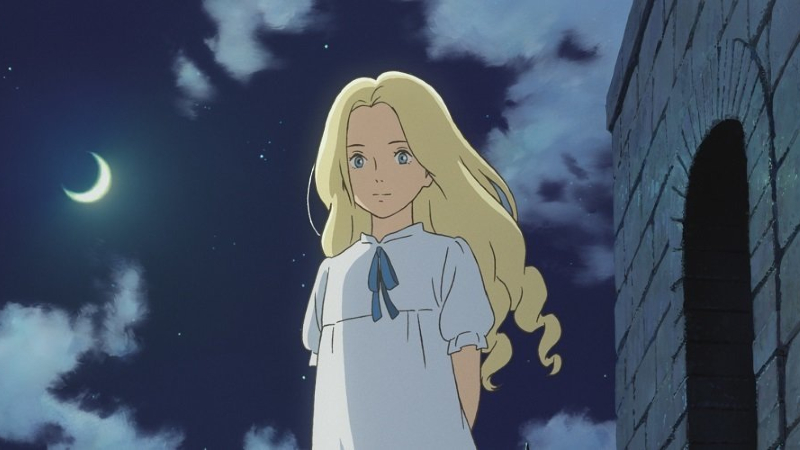
Neither Miyazaki nor the Studio’s other big name director Isao Takahata had any direct involvement in the film. It feels like a Ghibli movie on the one hand and something entirely different on the other. If I had never heard of either anime or Studio Ghibli, I would be impressed with the powerful adaptation of a classic British children’s book, the effective use of dramatic narrative and the groundbreaking deployment of the animation medium.
This second work by Arrietty director Hiromasa Yonebayashi is another adaptation of an English children’s author. Both films transplant their stories from an English setting to a Japanese one. Joan G. Robinson’s 1967 book When Marnie Was There is set in England’s flat, Eastern county of Norfolk which the film switches to Japan’s hillier, Northern island of Hokkaido.
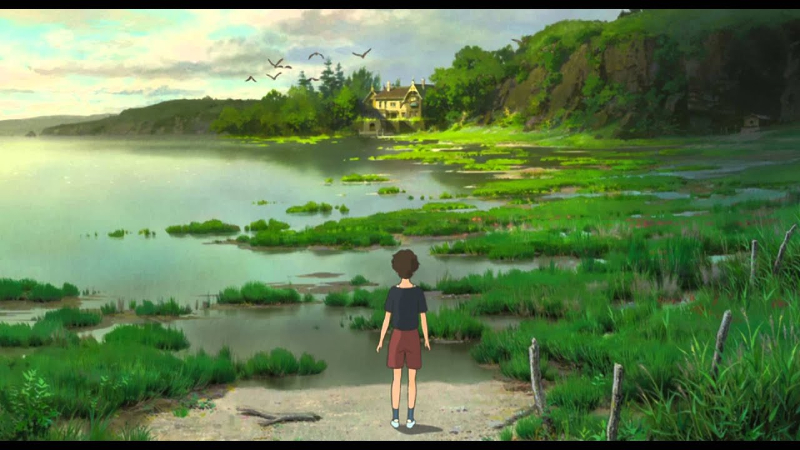
Robinson’s material helps Yonebayashi find his voice as director. For all its fine qualities, his earlier Arrietty feels like standard Ghibli fare by comparison. Where Arrietty is about tiny people the size of small animals who live in the world of full sized humans, no such fairy tale conceit underpins When Marnie Was There. Built around the friendship of two young girls over one Summer, its fundamental concern is reconciliation within broken families.
The book is a favourite of Miyazaki and features on his list of 50 Recommended Children’s Books. In-house producer Toshio Suzuki suggested to Yonebayashi that he adapt it. The latter liked the book but thought its strongest element was the dialogue between the two girls which didn’t strike him as obvious animation material. Yet the idea grew via sketches into concepts based around the world of nature and the connection between two hearts.
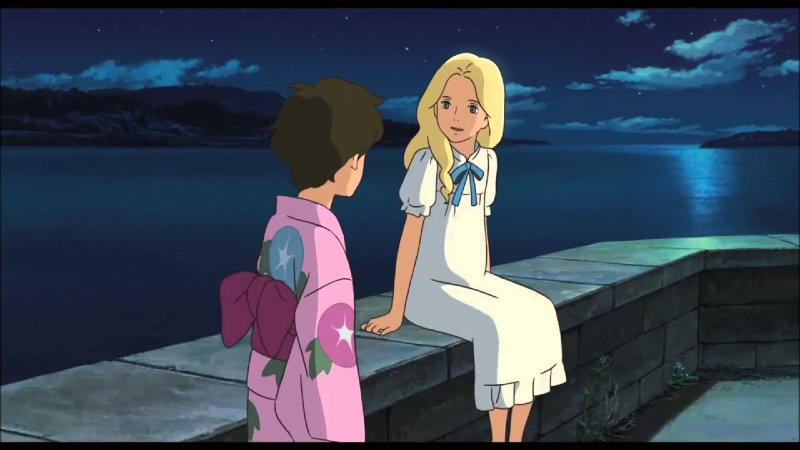
The dramatic narrative is driven and sometimes hindered by Anna’s psychological problem. She’s an introvert who breaks the mould of the upbeat, go-getter Ghibli heroine typified by Nausicaä of the Valley of the Wind (1984) and Kiki’s Delivery Service (1989). As the story unfolds, the audience comes to realise the toll Anna’s personal history has taken. Her plight is reflected in that of secondary character Marnie. The marsh which becomes a lake and the mansion beyond it provide the perfect settings for all this.
In keeping with the very different nature of Anna’s protagonist, the animation at once embodies the recognisable Ghibli style of naturalistic people moving naturalistically in naturalistic settings and plays against it.
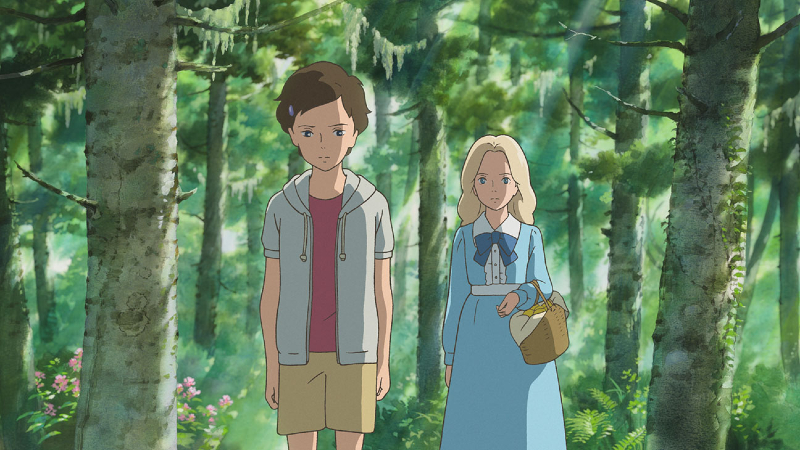
Thus, the opening urban playgrounds, hospital rooms and residential interiors give way to an extraordinary train journey sequence showing views through carriage windows transitioning from the city to the countryside. To photograph this in live action might be nothing special; to recreate it in animation as has been done here seems no less than wondrous.
When Anna later takes an off-road shortcut to the post office, we’re deeply affected on a subliminal level by the vegetation through which she must pass. Crossing the marsh, particularly in Anna’s dreams where it’s shrouded with fog, brings to mind Tolkien’s Dead Marshes: no faces in the ground but a similar sense of dread.
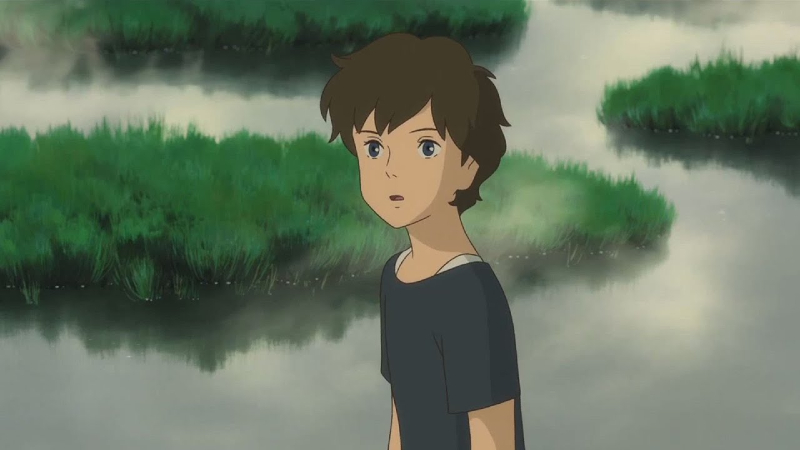
Later her glimpses of and subsequent encounters with Marnie have an unreal, ghostly quality about them. Is what we’re watching here real? Or is it a dream? The animation vacillates between these different states.
In short, Yonebayashi has achieved something quite remarkable here. It would be a great shame if it were to be the last film he ever made. However as the likely final entry in the Ghibli feature canon, it’s a worthy coda.
When Marnie Was There is now showing on Netflix (subtitled / dubbed) and can also be seen in the Anime season April / May 2022 at BFI Southbank (dubbed).
The above review originally appeared in Funimation UK.
Trailer (dubbed):
Trailer: (subtitled):
Original UK Cinema release: Friday, June 10th 2016.
